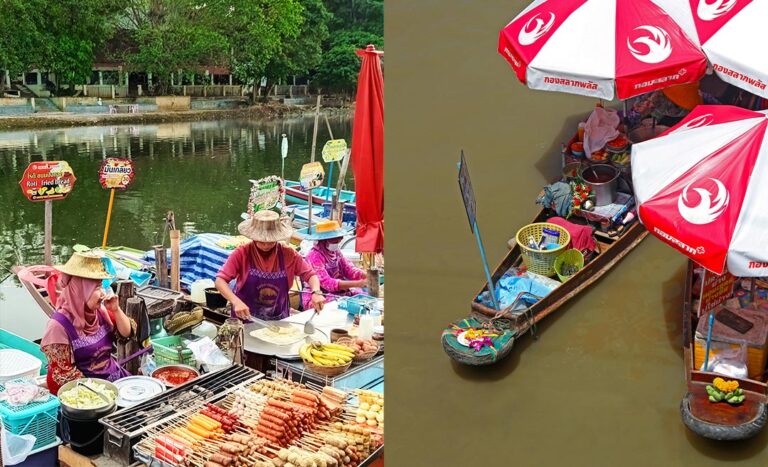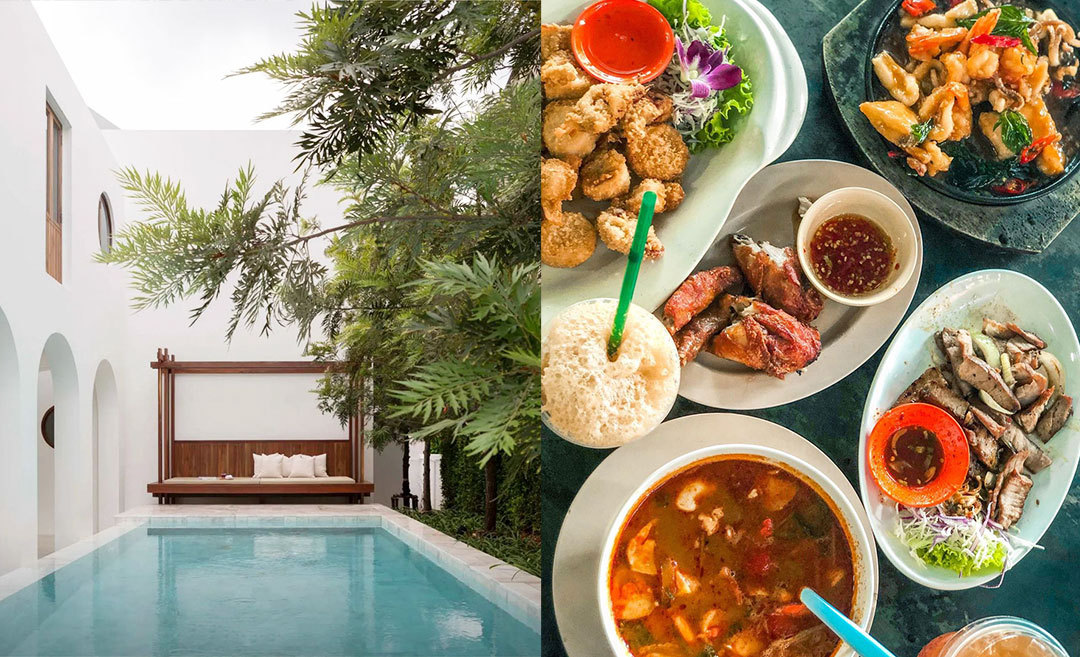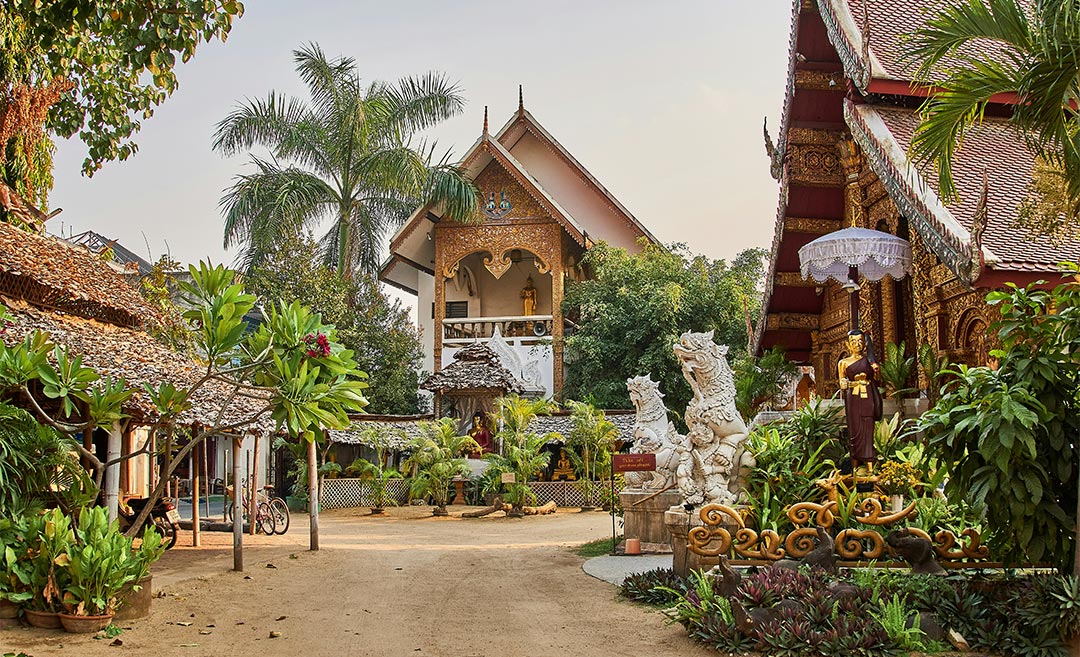Everyone loves a market, and they’re even more appealing when they offer something unique. Thailand is well known for its floating markets, where traders sell their wares from small boats moored along the banks of the country’s canals or those that move along these waterways.
Floating markets: Then vs. now
These markets are a colourful reflection of Thailand’s fascinating cultural and economic history. Dating back several centuries, they were essential trade hubs when canals and rivers served as primary transportation routes. Merchants sold goods directly from their boats, facilitating commerce in an era before modern transportation.
Today, floating markets remain a major attraction, combining tradition with tourism. Some of the most famous floating markets include Damnoen Saduak in Ratchaburi, known for its lively activity and fresh produce, and Amphawa in Samut Songkhram, famous for its seafood and night-time ambience.
These markets continue to thrive, offering local delicacies, souvenirs, and glimpses into the country’s river-based lifestyle. While some markets cater primarily to tourists, others still serve local communities, preserving a way of life that has existed for centuries.
Khlong Hae Floating Market: A visual feast
The late afternoon sun casts a golden glow over the Khlong Hae Floating Market, located close to the Hat Yai city centre. The air is thick with the aromas of spices and sizzling street food being prepared in small boats. Gentle ripples on the water reflect the kaleidoscopic colours from the vendor’s decorative wooden boats, each one laden with a tempting selection of delicious Thai dishes.
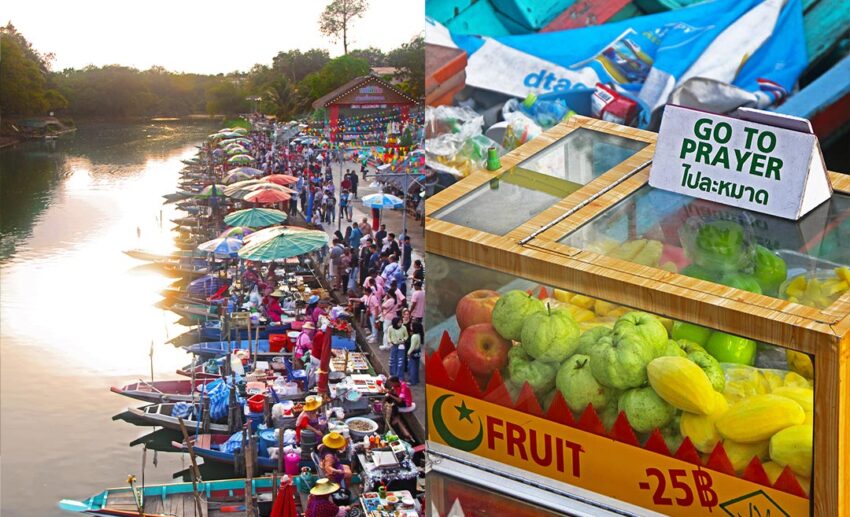
Khlong Hae is unique for its mix of vendors, where, for some traders, the selling stops while they attend to their religious obligations.
Khlong Hae is a visual feast, with long, narrow boats anchored along the northern side of the canal. Vendors balance themselves deftly on these wooden vessels, their wares meticulously arranged to entice hungry visitors. In days gone by, food and goods were passed from the boat to the customer via a long bamboo pole, but now they are mostly handed over.
Hawker food delights
These markets appeal to hungry and thirsty visitors as most of the products on display are ready-to-eat snacks and takeaway beverages. The aromas of grilled prawns, squid, and fish wrapped in banana leaves drift through the market.
Spicy papaya salad, or som tam, is a popular snack to be accompanied by some grilled chicken. Vendors offer various degrees of chilli spiciness, and it’s best to speak up early when ordering.
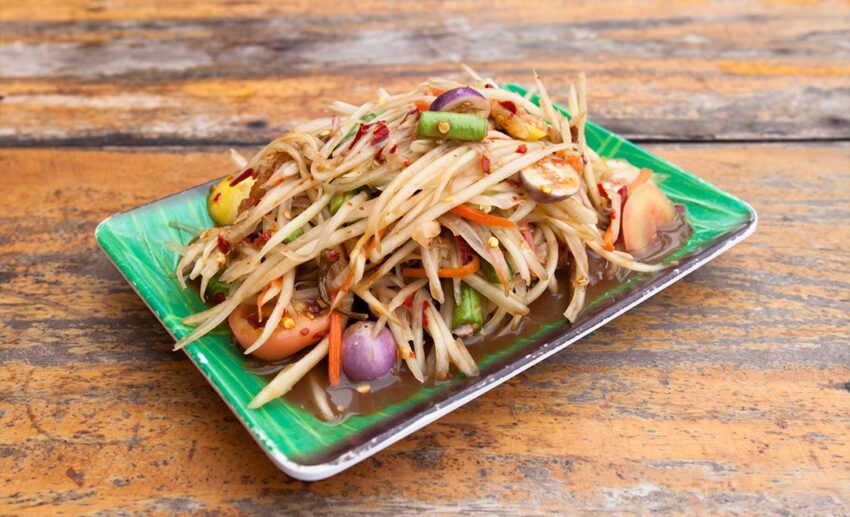
Coconut pancakes sizzle on griddles, their crisp edges caramelising to perfection. Skewers of marinated meat, prepared with spices and served with aromatic sauces, are grilled over open flames, their juices dripping onto smouldering charcoal, creating a heady mix of smoke and spice. Another familiar dish is dim sum; tables and chairs on the dock make it like one big open-air food court.

Sticky rice with mango, a Thai classic, is served in generous portions. The rice is infused with coconut milk and paired with plump slices of sweet mango. Khanom krok, bite-sized coconut custard cakes, are crisp on the outside and lusciously soft in the centre, a perfect treat for snacking on.

Beverages are an experience too, especially the ever-popular Thai iced tea, often served in clay pots or bamboo cups. Colourful fruit drinks and shakes blend local fruits into vibrant concoctions that are as visually striking as they are delicious. Being Thailand, stronger beverages are available with at least one bar serving icy cold beer for those who are interested.

More than food
To add to the carnival atmosphere, most of the goods are sold by vendors wearing wide-brimmed straw hats.
Beyond the food, the market that extends back from the immediate riverbank offers the usual market fare of handcrafted goods, souvenirs, clothing, and traditional attire. Intricately woven baskets, handmade soaps infused with local herbs, and carved wooden items are on display. Silk scarves and batik-patterned fabrics provide a glimpse into Thailand’s textile heritage.
As darkness approaches, lanterns are lit, and lights illuminate the boats, with their reflections shimmering on the surface of the canal water. Families gather on makeshift wooden platforms, sharing meals in the open air, while couples stroll along the canal’s edge, sampling the delicious treats on offer.

Khlong Hae Floating Market is more than just a place to eat or shop; it is also an opportunity to experience a way of life that has long been associated with the nation’s waterways. The market thrives not merely because of its offerings, but because it represents a shared cultural heritage, a space where tradition is kept alive through the simple act of buying, selling, and coming together as a community.
The market is easily accessible, whether by tuk-tuk, Grab, motorcycle, or private car, as it is located just to the north of the city centre, off the main road heading to Songkhla. It operates from Friday to Sunday, between the late afternoon and evening hours, and is liveliest just before sunset, when tourists emerge into the cooler evening air.
Khlong Hae Floating Market is a lively venue that draws both locals and visitors eager to taste southern Thai dishes set in a sunset setting.
Travelling to Hat Yai
The floating market especially appeals to Malaysian travellers who cross the border for a taste of southern Thai life. Many drive to ensure they are mobile in the city; however, those who fly or use the railway can get around the city quite cheaply using Grab (cars or motorbikes) or in a tuk-tuk.
Both Batik Air and AirAsia fly to Hat Yai Airport, with the flight taking a little over 60 minutes from Kuala Lumpur. Another alternative is to catch the train from Kuala Lumpur to Hat Yai via Penang (Butterworth).
All images provided by David Bowden unless specified otherwise.

